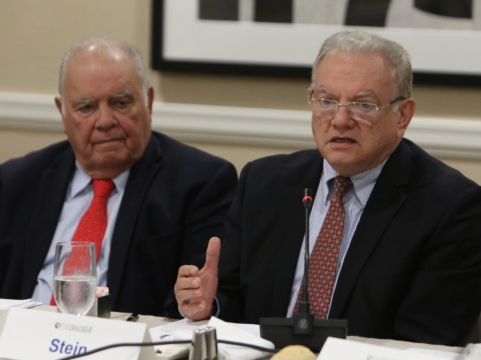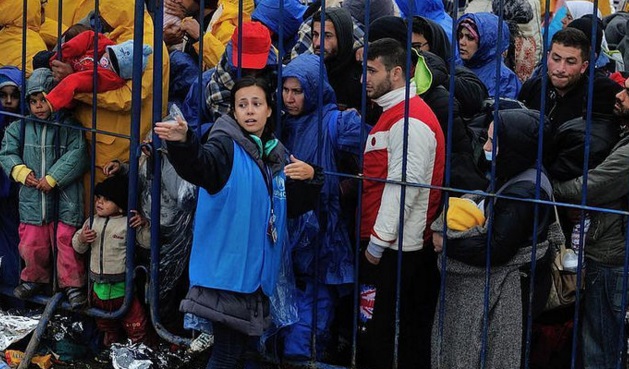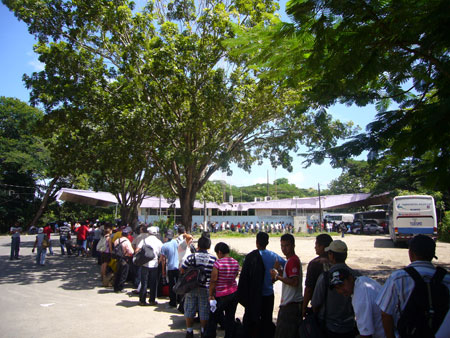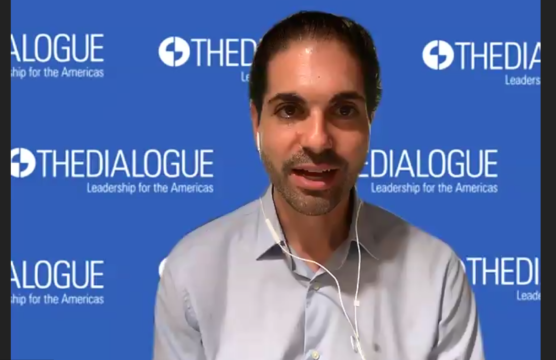
Member in the News: Eduardo Stein
On September 12, 2018, Eduardo Stein was named by the Secretary General of the United Nations as the Special Representative for Venezuelan Migrants and Refugees.
A Daily Publication of The Dialogue
Nicaragua and Costa Rica have recently seen a flood of Cuban immigrants enter their countries in hopes of reaching the United States, concerned that the country may end its “wet foot, dry foot” policy that grants residency to Cuban immigrants if they arrive in the United States by land. Meanwhile, police forces in Costa Rica, Honduras and Paraguay have detained Syrian refugees possessing stolen Greek passports on their way to seek asylum in the United States, amid fears that militants may be using the same routes to gain access to the United States. Are Latin American countries equipped to handle a refugee crisis? What can be done to control the flow of migrants? How are changes in migration patterns affecting local security and relations between neighboring countries? Should authorities in the region be turning away Syrian refugees out of concerns over terrorism?
Tom Gjelten, correspondent for National Public Radio news: Governing authorities in Central America have long dealt with smuggling rings, unaccompanied children and other problems associated with irregular migration. With the addition of thousands of Cubans and a few Syrian refugees to the migrating mix, however, the situation has recently taken on political overtones. The encampment of Cubans on the Costa Rican-Nicaraguan border is a product both of U.S. government policies and Cuban government priorities. The appearance of a few Syrian refugees among the migrants moving through the region has been cited by U.S. politicians to bolster their argument that, given terrorism fears, the United States needs to be more careful about whom it admits to the country. The Cuban migrants apparently fear that a U.S.-Cuba rapprochement will bring an end to the ‘wet foot-dry foot’ policy. But the Cuban flow is also due to Ecuador’s decision to allow Cubans visa-free entry and to Nicaragua’s decision to block their further movement. Because Ecuador and Nicaragua are close allies of Cuba, Havana’s critics see a manufactured migration crisis intended to pressure the U.S. Congress to cancel the Cuban Adjustment Act and remove the trade embargo. The discovery of a small number of Syrian refugees among the migrants, meanwhile, might have gone unnoticed if not for the debate over how many Syrians the United States should accept and of which religion. People from Africa, South Asia and the Middle East have long been part of the illegal migratory flow through Central America. For governments to find a solution to the current crisis, they may need to consider the political issues that surround it.
Gilberto M. A. Rodrigues, professor at the Federal University of ABC in Brazil and member of Coordinadora Regional de Investigaciones Económicos y Sociales in Buenos Aires: Latin America has had a strong and well-developed regional refugee policy since the mid-1980s. In fact, after the Cartagena Declaration of 1984, in which a massive violation of human rights was invoked to enlarge the international legal refugee concept, Latin American countries incorporated international refugee law into their domestic laws and have equipped themselves legally and logistically to face that challenge. Although the policy of open borders for (mainly Colombian) refugees has prevailed in the region under the support of the United Nations High Commissioner for Refugees (UNHCR), Central America may be a ‘special case,’ given the securitization of migration policy as a result of a strong U.S. pressure to combat organized crime, that is, the so-called ‘war on drugs.’ Even if the Central American Integration System (SICA) has tried to deal with migration through a human security approach, the case of the Syrian refugees shows that a conservative security policy is threatening a human rights tradition for the region. In the case of Paraguay, its desire to avoid any suspicions of being a terrorist haven partially explains the country’s restriction of Syrian refugees, though restricting entry is against both Mercosur and Unasur positions. In general, the region has applied the principle of solidarity to receive refugees and most of the countries do not see Syrians as potential or real terrorists but rather as victims of a serious humanitarian crisis.
Joseph Eldridge, university chaplain and senior adjunct professorial lecturer at American University: The flood of asylum seekers from Syria and other broken countries crossing the Aegean Sea and battering down the fences of EU countries has sent ripples around the world, including in the Western Hemisphere. The claim that one of the perpetrators of the Paris attacks had infiltrated the flow of refugees has placed governments on high alert. Alarm bells have resounded in the United States, propelled by the presidential election campaign. The Republican candidates are in a fierce competition to demonstrate who can come up with the most restrictive formula. And several have called for a halt for all Syrian refugees attempting to seek asylum in the United States. Jeb Bush has called for admitting only Syrians who are demonstrably Christian (but had trouble when asked how Christian bona fides could be validated). The tide of Syrians in Europe has sparked fear among Cubans that the ‘wet foot, dry foot’ policy might be suspended, which has led to an inundation by Cubans from the communist island seeking temporary refuge in Nicaragua and Costa Rica. Central American borders are notoriously porous, leading governments in the region to fear a surge in the flow of people scrambling to use these countries as a land bridge into the United States. This anxiety is compounded by fears that terrorists may be lurking among the innocents. This has precipitated an interesting paradox for the Northern Triangle countries (El Salvador, Honduras and Guatemala) which are more accustomed to flows in the other direction –heading north out of the these regions. Unsurprisingly, border controls among the Central American countries are either very weak or non-existent. Governments historically have invested more military resources in surveilling their own populations than in training and equipping social agencies to address the humanitarian crises that would follow from migration flows across borders. When fear drives policies, chaos and repression are often the result. It is imperative that the Central American governments reorder their priorities to address current refugee needs while equipping themselves in anticipation of what is increasingly becoming a global refugee crisis.
The Latin America Advisor features Q&A from leaders in politics, economics, and finance every business day. It is available to members of the Dialogue's Corporate Program and others by subscription.
On September 12, 2018, Eduardo Stein was named by the Secretary General of the United Nations as the Special Representative for Venezuelan Migrants and Refugees.
The current and sustained political instability in Nicaragua paints a worrisome picture. As a result, migration to Costa Rica, and likely to other countries, has grown significantly.
On August 6, 2020, Michael Camilleri, director of the Peter D. Bell Rule of Law Program, spoke as a panelist at an event held by the World Refugee & Migration Council and Integrity Initiatives International to discuss two proposals designed to combat grand corruption and assist those who have been forcibly displaced as a result of this corruption.


 Video
Video